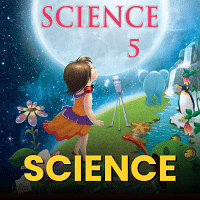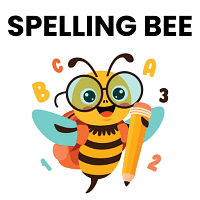Class 5 Exam > Class 5 Questions > Conservation isa)Preserving and protecting th...
Start Learning for Free
Conservation is
- a)Preserving and protecting the environment and the natural things present in it.
- b)Littering of waste material
- c)Production of large amounts of non-biodegradable things
- d)None of these.
Correct answer is option 'A'. Can you explain this answer?
| FREE This question is part of | Download PDF Attempt this Test |
Most Upvoted Answer
Conservation isa)Preserving and protecting the environment and the nat...
Conservation:
Conservation is the practice of preserving and protecting the environment and the natural resources present in it. It involves the sustainable use of resources to ensure their availability for future generations. Here is a detailed explanation of what conservation entails:
1. Preserving and protecting the environment:
- Conservation aims to protect ecosystems, biodiversity, and natural habitats from degradation and destruction.
- It involves efforts to prevent pollution, reduce deforestation, and conserve water bodies.
- Conservation also includes measures to mitigate climate change and promote sustainable energy sources.
2. Sustainable use of resources:
- Conservation focuses on using natural resources in a responsible and sustainable manner.
- This includes practices like reforestation, sustainable agriculture, and responsible fishing to ensure the long-term availability of resources.
- Conservation also promotes the efficient use of energy and encourages the adoption of renewable energy sources.
3. Biodiversity conservation:
- Conservation efforts are directed towards preserving the rich diversity of species and ecosystems.
- This involves protecting endangered species, establishing protected areas, and promoting habitat restoration.
- Conservation also recognizes the importance of biodiversity for ecosystem stability and resilience.
4. Educating and raising awareness:
- Conservation involves educating individuals and communities about the importance of environmental protection.
- This includes promoting sustainable practices, environmental ethics, and responsible consumer choices.
- Awareness campaigns and educational programs help build a conservation-minded society.
5. Collaboration and policy development:
- Conservation requires collaboration between governments, organizations, and individuals.
- Policies and regulations are developed to promote conservation practices and protect natural resources.
- International agreements and conventions play a crucial role in addressing global environmental challenges.
In conclusion, conservation is the proactive effort to preserve and protect the environment and its natural resources for the benefit of present and future generations. It involves sustainable resource use, biodiversity conservation, education, and policy development. By practicing conservation, we can ensure the long-term sustainability and health of our planet.
Conservation is the practice of preserving and protecting the environment and the natural resources present in it. It involves the sustainable use of resources to ensure their availability for future generations. Here is a detailed explanation of what conservation entails:
1. Preserving and protecting the environment:
- Conservation aims to protect ecosystems, biodiversity, and natural habitats from degradation and destruction.
- It involves efforts to prevent pollution, reduce deforestation, and conserve water bodies.
- Conservation also includes measures to mitigate climate change and promote sustainable energy sources.
2. Sustainable use of resources:
- Conservation focuses on using natural resources in a responsible and sustainable manner.
- This includes practices like reforestation, sustainable agriculture, and responsible fishing to ensure the long-term availability of resources.
- Conservation also promotes the efficient use of energy and encourages the adoption of renewable energy sources.
3. Biodiversity conservation:
- Conservation efforts are directed towards preserving the rich diversity of species and ecosystems.
- This involves protecting endangered species, establishing protected areas, and promoting habitat restoration.
- Conservation also recognizes the importance of biodiversity for ecosystem stability and resilience.
4. Educating and raising awareness:
- Conservation involves educating individuals and communities about the importance of environmental protection.
- This includes promoting sustainable practices, environmental ethics, and responsible consumer choices.
- Awareness campaigns and educational programs help build a conservation-minded society.
5. Collaboration and policy development:
- Conservation requires collaboration between governments, organizations, and individuals.
- Policies and regulations are developed to promote conservation practices and protect natural resources.
- International agreements and conventions play a crucial role in addressing global environmental challenges.
In conclusion, conservation is the proactive effort to preserve and protect the environment and its natural resources for the benefit of present and future generations. It involves sustainable resource use, biodiversity conservation, education, and policy development. By practicing conservation, we can ensure the long-term sustainability and health of our planet.
Attention Class 5 Students!
To make sure you are not studying endlessly, EduRev has designed Class 5 study material, with Structured Courses, Videos, & Test Series. Plus get personalized analysis, doubt solving and improvement plans to achieve a great score in Class 5.

|
Explore Courses for Class 5 exam
|

|
Similar Class 5 Doubts
Conservation isa)Preserving and protecting the environment and the natural things present in it.b)Littering of waste materialc)Production of large amounts of non-biodegradable thingsd)None of these.Correct answer is option 'A'. Can you explain this answer?
Question Description
Conservation isa)Preserving and protecting the environment and the natural things present in it.b)Littering of waste materialc)Production of large amounts of non-biodegradable thingsd)None of these.Correct answer is option 'A'. Can you explain this answer? for Class 5 2024 is part of Class 5 preparation. The Question and answers have been prepared according to the Class 5 exam syllabus. Information about Conservation isa)Preserving and protecting the environment and the natural things present in it.b)Littering of waste materialc)Production of large amounts of non-biodegradable thingsd)None of these.Correct answer is option 'A'. Can you explain this answer? covers all topics & solutions for Class 5 2024 Exam. Find important definitions, questions, meanings, examples, exercises and tests below for Conservation isa)Preserving and protecting the environment and the natural things present in it.b)Littering of waste materialc)Production of large amounts of non-biodegradable thingsd)None of these.Correct answer is option 'A'. Can you explain this answer?.
Conservation isa)Preserving and protecting the environment and the natural things present in it.b)Littering of waste materialc)Production of large amounts of non-biodegradable thingsd)None of these.Correct answer is option 'A'. Can you explain this answer? for Class 5 2024 is part of Class 5 preparation. The Question and answers have been prepared according to the Class 5 exam syllabus. Information about Conservation isa)Preserving and protecting the environment and the natural things present in it.b)Littering of waste materialc)Production of large amounts of non-biodegradable thingsd)None of these.Correct answer is option 'A'. Can you explain this answer? covers all topics & solutions for Class 5 2024 Exam. Find important definitions, questions, meanings, examples, exercises and tests below for Conservation isa)Preserving and protecting the environment and the natural things present in it.b)Littering of waste materialc)Production of large amounts of non-biodegradable thingsd)None of these.Correct answer is option 'A'. Can you explain this answer?.
Solutions for Conservation isa)Preserving and protecting the environment and the natural things present in it.b)Littering of waste materialc)Production of large amounts of non-biodegradable thingsd)None of these.Correct answer is option 'A'. Can you explain this answer? in English & in Hindi are available as part of our courses for Class 5.
Download more important topics, notes, lectures and mock test series for Class 5 Exam by signing up for free.
Here you can find the meaning of Conservation isa)Preserving and protecting the environment and the natural things present in it.b)Littering of waste materialc)Production of large amounts of non-biodegradable thingsd)None of these.Correct answer is option 'A'. Can you explain this answer? defined & explained in the simplest way possible. Besides giving the explanation of
Conservation isa)Preserving and protecting the environment and the natural things present in it.b)Littering of waste materialc)Production of large amounts of non-biodegradable thingsd)None of these.Correct answer is option 'A'. Can you explain this answer?, a detailed solution for Conservation isa)Preserving and protecting the environment and the natural things present in it.b)Littering of waste materialc)Production of large amounts of non-biodegradable thingsd)None of these.Correct answer is option 'A'. Can you explain this answer? has been provided alongside types of Conservation isa)Preserving and protecting the environment and the natural things present in it.b)Littering of waste materialc)Production of large amounts of non-biodegradable thingsd)None of these.Correct answer is option 'A'. Can you explain this answer? theory, EduRev gives you an
ample number of questions to practice Conservation isa)Preserving and protecting the environment and the natural things present in it.b)Littering of waste materialc)Production of large amounts of non-biodegradable thingsd)None of these.Correct answer is option 'A'. Can you explain this answer? tests, examples and also practice Class 5 tests.

|
Explore Courses for Class 5 exam
|

|
Signup for Free!
Signup to see your scores go up within 7 days! Learn & Practice with 1000+ FREE Notes, Videos & Tests.
























